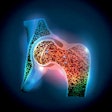Sunday, November 30 | 11:55 a.m.-12:05 p.m. | SSA16-08 | Room N226
A German team has found that 3D volumetric assessment is reliable for assessing the inner structures of the ear on MRI.As part of a large, ongoing project using volumetric assessment from 3D reconstructions of high-resolution MRI to evaluate different ear structures (see SSA16-04 and SSA16-07), the group from Johann Wolfgang Goethe University sought to assess the reproducibility of the assessment technique.
In a study involving 50 patients, the team performed the same measurements twice, with a one-year time interval to eliminate any possible measurement biases, said presenter Dr. Nagy Naguib. They found that the volumetric assessment technique, which was performed on an Advantage Workstation (GE Healthcare), was highly reproducible.
The researchers believe that different diseases might affect the volume of inner-ear structures. For example, in a paper presented at RSNA 2013, the team showed that the fluid content volume of the vestibular system is reduced in patients with vertigo, Naguib said.
"In addition, we think that such studies can open the horizon for a new dimension in assessment of patients with inner-ear disease, taking the third dimension beyond the borders of just presenting the referring clinician with colored images simulating the known anatomical pictures and [toward] making a real use of the third dimension for patient assessment," he explained to AuntMinnie.com in an email.




















